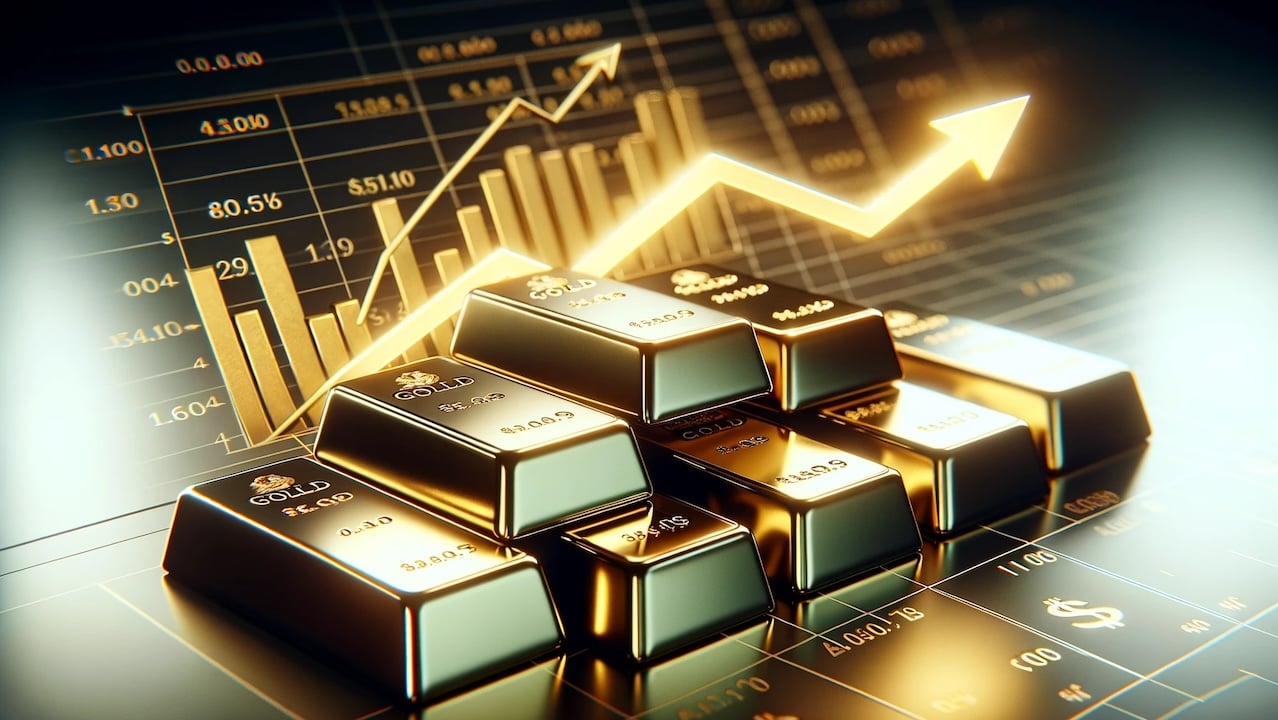(Mike Maharrey, Money Metals News Service) Gold was up 4 percent in April, despite some profit-taking, along with headwinds from a strong dollar and waning hope for an interest rate cut.
Gold hit a new all-time high of 2,431 in April, but pulled back later in the month as hopes the Federal Reserve would cut interest rates in the near future faded.
Even with Fed hawkishness, the price of gold seems to have found solid support above $2,300.
The price of gold is up about 13.7 percent since it started its bull run in late February.
Gold charted gains in virtually every major currency last month.
What Drove the Gold Price in April?
According to the World Gold Council, central bank gold buying and Chinese investor demand supported the gold price in May, even with profit-taking and an easing of geopolitical pressures dampening safe-haven demand.
The World Gold Council has not compiled central bank gold data for April at this time, but central bank demand likely followed the trend we’ve seen over the last two years with strong net buying driven by China and other emerging market central banks. Central bank net demand totaled 290 tons in Q1, the strongest start to any year on record.
Meanwhile, gold demand in Asia, particularly China, has been robust for months. Wholesale demand in China set a record in January. Assets under management by Chinese gold-backed ETFs also hit an all-time high.
Gold demand in China was up 28 percent in 2023 and analysts and Metals Focus project continued solid demand through the rest of the year.
First quarter gold demand globally came in at the highest level since 2016. The details reflect this strong central bank demand, along with a shift in gold from West to East.
Looking Ahead
The World Gold Council has picked up on the stagflation warning signs. While the mainstream view has shifted from a “soft landing” to a “no landing” scenario with moderating growth along with persistent price inflation in a higher-for-longer interest rate environment.
But the World Gold Council called economic growth “precarious” noting that it would depend on further government support and strength in the labor market, “both factors that open the door for event risk.”
Fiscal stimulus is already at an extremely high level in the United States with the Biden Administration spending over half a trillion dollars every month. In fact, the level of government spending and the resulting national debt is one of the factors thwarting the Federal Reserve inflation fight.
That’s because the two primary weapons the Fed uses against price inflation are interest rate increases and balance sheet reductions. Both become increasingly difficult to wield as the national debt spirals upward.
As the World Gold Council put it, “Inflation remains sticky.”
“The outlook seems to point once again to ‘stagflation’, which, in turn, is helping the case for gold and could encourage Western investors to join strong demand from central banks and Far East buyers.”
…
“The levels of inflation and growth deceleration we are seeing now are not as precarious as those experienced during the 1970s period of stagflation. But our analysis suggests that we do not need a repeat of those extreme conditions for stocks to be under pressure. Conversely, gold will likely respond positively to the combination of sticky inflation and less-than-stellar growth.”
Mike Maharrey is a journalist and market analyst for MoneyMetals.com with over a decade of experience in precious metals. He holds a BS in accounting from the University of Kentucky and a BA in journalism from the University of South Florida.

